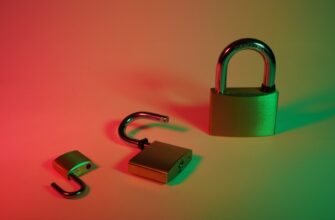Why Offline Storage Is Essential for Ledger Security
Securing cryptocurrency requires proactive defense against digital threats. Hardware wallets like Ledger provide robust protection by keeping private keys offline—a method called cold storage. When you disconnect your Ledger device from the internet, it creates an air-gapped environment where hackers cannot remotely access your keys. This isolation is fundamental because online-connected devices constantly face malware, phishing attacks, and network vulnerabilities. By storing your Ledger offline when not in use, you eliminate these attack vectors, making it one of the safest methods for long-term crypto asset protection.
How Offline Storage Enhances Ledger Security
Ledger devices leverage specialized security architecture to maximize offline safety:
- Secure Element Chip: Military-grade encryption isolates private keys, even if connected to compromised computers
- Physical Confirmation: All transactions require manual verification on the device screen
- Zero Wireless Connectivity: No Bluetooth/Wi-Fi means no remote exploitation pathways
- PIN Protection: Device locks after incorrect PIN entries, thwarting brute-force attacks
Unlike software wallets, Ledger’s design ensures keys never leave the device. Transactions are signed internally and broadcast via USB—your sensitive data remains offline throughout.
Best Practices for Maximum Offline Security
Follow these critical steps to optimize Ledger safety:
- Initialize Offline: Set up your device on a malware-free computer without internet access
- Secure Recovery Phrases: Store 24-word seed ONLY on physical media (metal plates recommended) in multiple locations
- Enable Passphrase: Add a 25th custom word for advanced protection against physical theft
- Regular Firmware Updates: Connect briefly to install security patches, then disconnect immediately
- Verify Addresses: Always cross-check receiving addresses on your Ledger screen before transactions
Common Offline Security Mistakes to Avoid
Even with offline storage, these errors compromise safety:
- Digitally photographing/storing seed phrases (cloud, email, notes)
- Using Ledger on public computers or unsecured networks
- Ignoring firmware updates for extended periods
- Storing device and recovery phrase in the same location
- Buying second-hand devices (risk of pre-tampering)
Remember: Your seed phrase is the ultimate key—never share it or enter it anywhere except your Ledger device.
Frequently Asked Questions
Q: Can hackers access my offline Ledger?
A: Extremely unlikely. Without physical access AND your PIN/passphrase, funds remain secure. Offline storage blocks remote attacks.
Q: How often should I update my offline Ledger?
A: Check for updates quarterly. Connect briefly via Ledger Live (verify URL authenticity), update, then disconnect immediately.
Q: Is a fireproof safe sufficient for seed storage?
A> Yes, but combine with waterproof protection. Diversify locations—consider bank safety deposit boxes + home safes.
Q: What if my offline Ledger is stolen?
A> Your funds are safe if you have your recovery phrase. Wipe the device remotely via Ledger Live and restore assets to a new device using your seed.
Q: Does offline mode prevent all risks?
A> While it eliminates online threats, physical theft remains a concern. Always use PIN/passphrase and obscure storage locations.
Final Verdict on Offline Ledger Safety
Securing your Ledger offline is not just safe—it’s industry best practice. By combining the device’s hardware encryption with disciplined offline protocols, you create a near-impenetrable defense layer. Remember that 95% of breaches involve user error, not hardware flaws. Follow the outlined procedures: guard your recovery phrase religiously, update firmware cautiously, and maintain physical control. When implemented correctly, offline Ledger storage provides bank-grade security for your digital assets, letting you invest with confidence in the volatile crypto landscape.








